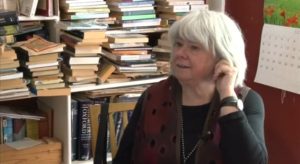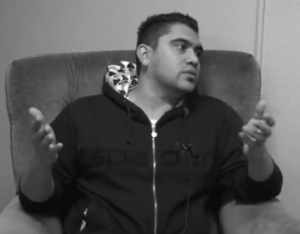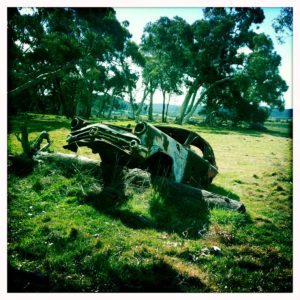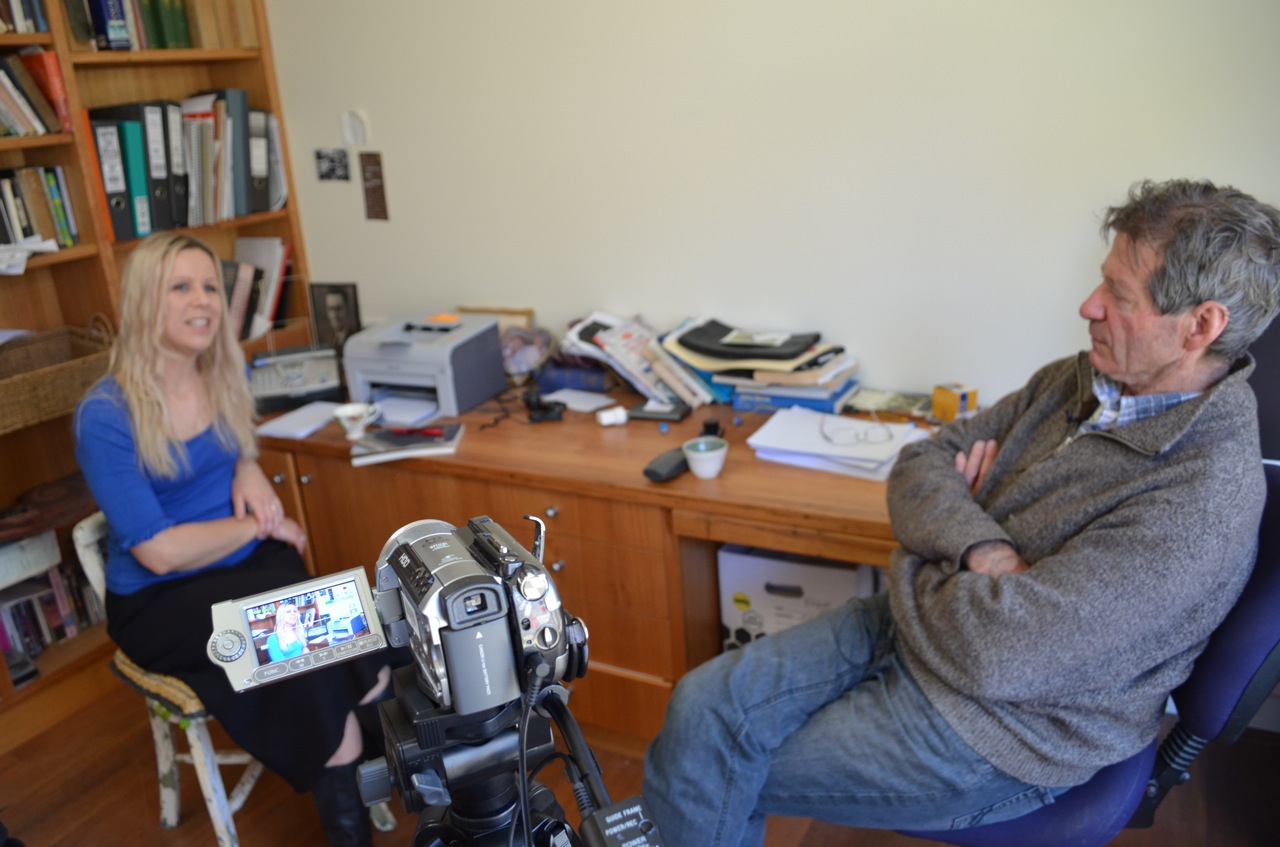The Invisible Thread series: Marion Halligan
Somehow Marion Halligan’s home is exactly as I imagine a writer’s should be. Books everywhere, the right kind of clutter, a garden full of gorgeous sprawl. I first visited her there a couple of years ago. My then four year old bought with him a copy of Toy Story, an appallingly written transcript (this happened then this happened then this…) that I always tried to avoid reading. Not the kind of book to bring to Marion Halligan’s house, I thought, but said nothing. As it turned out it was this book that resulted in Marion’s young granddaughter, Bianca, taking an instant liking to Marius. So there we were, two writers whose respective charges had bonded over a trashy book version of a movie.
But this time when I visit it’s just me and cameraman Dylan Jones and a (not at all trashy, I can assure you) copy of The Invisible Thread. In the hallway, reminding me of that earlier visit, is a painting of Bianca, arms outstretched with the kind of unrestrained joy only children allow themselves.
We follow Marion up a flight of stairs to her writing space. ‘As you can see I’m a messy writer,’ she says. ‘I like a lot of junk around. I like to have things that I can look at.’ But it’s not junk. It’s books and art and papers and the kinds of things writers need.
Read More »The Invisible Thread series: Marion Halligan
Her partner and fellow Invisible Thread author, poet John Stokes, makes us strong coffee in cobalt patterned cups while Dylan sets up the cameras. The windows are full of trees and that particular Canberra light that Marion has recently written about. I can just see her, pen in hand, gazing out of the window, searching for exactly the right word.
The cameras roll and we talk about Marion’s writing life. At the age of 15 she earned the substantial sum of one guinea for a poem (‘It’s what you paid a specialist doctor,’ Marion points out), and yet nobody encouraged her to write for a living. It wasn’t until her fortieth birthday that she decided to stop thinking about being a writer ‘one day, and do it now’. Lucky for us she did. Marion is now one of Australia’s finest writers, though she regrets not having started earlier at a ‘Tim Winton-ish sort of age’.
As I said at the launch, I found reading and re-reading her essay, ‘Luminous Moments’, which concludes The Invisible Thread, a profound experience. As good literature can, it has changed me. For the anthology we were sifting through 100 years of work to find luminous moments in literature, so it’s an apt note to finish on, but for me it’s about more than that. Marion speaks about it eloquently in this interview saying, ‘It’s important for our lives to think of past moments as still existing.’ If you watch the interview you’ll understand why.
Marion also speaks about The Invisible Thread selection process and being part of the Advisory Committee; reflects on what she sees when she looks back on her career to date; and speaks candidly about the now legendary Seven Writers group, saying, ‘I was very reluctant to join in the first place. I thought, No, I don’t need this.’ But the competitive yet nurturing nature of the group proved to be ‘hugely motivating’ and all of them went on to find success.
Marion always has so many interesting things to say and I could have sat chatting all afternoon. You can join our conversation via YouTube.
https://www.youtube.com/watch?v=N_xkgzur7nk














